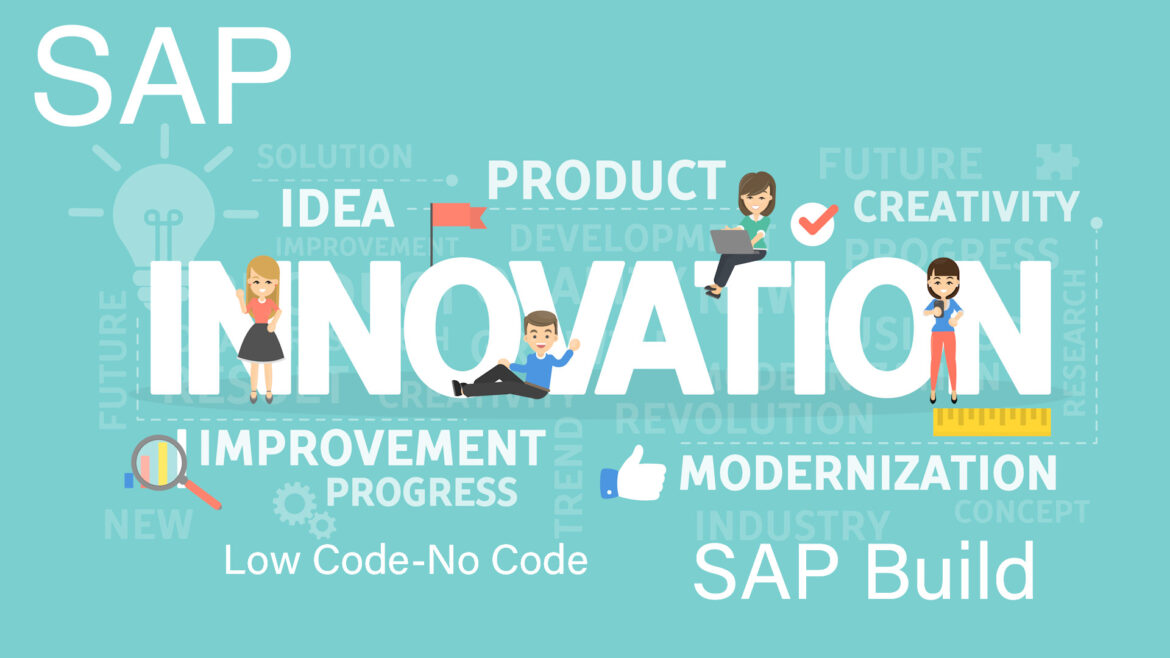Introduction
In today’s fast-paced digital landscape, businesses face constant pressure to innovate, adapt, and deliver exceptional user experiences. The demand for new applications, automated processes, and integrated digital workspaces often outstrips the capacity of traditional IT development teams. This is where SAP Build comes in – a unified, low-code/no-code platform designed to empower both professional developers and business users to create the solutions they need with speed and agility.
If your organization is looking to accelerate digital transformation, reduce IT backlog, and foster a culture of innovation, here’s why you should switch to SAP Build.
What is SAP Build? A Unified Platform for Creation
SAP Build is a key component of the SAP Business Technology Platform (BTP), offering a comprehensive suite of intuitive, low-code/no-code tools that enable users to:
- Build Applications (SAP Build Apps): Create enterprise-grade applications for web and mobile with a drag-and-drop interface, visual programming, and pre-built components, requiring little to no coding knowledge.
- Automate Processes (SAP Build Process Automation): Design, model, and automate business processes and tasks using visual workflows, robotic process automation (RPA), and embedded AI capabilities.
- Create Business Sites (SAP Build Work Zone): Design and curate engaging digital workspaces and central entry points that provide personalized, role-based access to relevant applications, information, and processes from SAP and non-SAP systems.
Essentially, SAP Build democratizes application development and process automation, allowing a wider range of users within an organization to become creators and contribute to digital innovation.
Key Reasons to Switch to SAP Build
Switching to SAP Build offers a multitude of benefits that can significantly impact your organization’s agility, efficiency, and ability to innovate:
1. Accelerate Application Development and Reduce IT Backlog:
The traditional development lifecycle can be time-consuming and resource-intensive. SAP Build’s low-code/no-code approach drastically reduces the time and effort required to build applications and automate processes. Citizen developers (business users with no or minimal coding experience) can build simple applications and automate their own tasks, freeing up professional developers to focus on more complex and strategic projects. This directly addresses the challenge of growing IT backlogs and accelerates the delivery of critical business solutions.
2. Empower Business Users (Citizen Developers):
SAP Build puts the power of creation directly into the hands of business users who have the deepest understanding of their own processes and needs. With its intuitive visual interfaces and pre-built content, citizen developers can build departmental applications, automate manual steps in their workflows, and create tailored workspaces without relying on IT resources. This fosters a culture of innovation from within the business.
3. Enhance Collaboration Between IT and Business:
SAP Build promotes a “fusion development” approach, encouraging collaboration between citizen developers and professional IT developers. Business users can create initial prototypes and define requirements visually, while professional developers can extend these solutions, build complex logic, integrate with backend systems, and ensure scalability and governance. This collaborative model ensures that solutions are both technically sound and closely aligned with business needs.
4. Seamless Integration with SAP and Non-SAP Systems:
Built on SAP BTP, SAP Build offers deep integration capabilities with core SAP systems like SAP S/4HANA, SAP SuccessFactors, and others, as well as third-party applications and data sources. This is achieved through pre-built connectors, APIs, and the robust integration services of SAP BTP, ensuring that the solutions you build with SAP Build are seamlessly connected to your existing landscape.
5. Drive Process Efficiency Through Automation:
SAP Build Process Automation combines workflow management and RPA to automate repetitive manual tasks across various systems. This leads to increased efficiency, reduced errors, and allows employees to focus on higher-value activities. From automating document processing to streamlining approval workflows, SAP Build empowers you to optimize your business operations.
6. Create Engaging and Unified User Experiences:
With SAP Build Work Zone, you can consolidate access to disparate applications and information into a single, personalized, and role-based digital workspace. This simplifies the user experience, improves productivity, and ensures that users can easily find and access the tools and information they need, regardless of where the underlying application resides.
7. Foster Innovation and Agility:
The speed and ease of development with SAP Build allow organizations to quickly experiment with new ideas, build prototypes, and iterate rapidly based on feedback. This agility is crucial for responding to changing market conditions and staying ahead of the competition. SAP Build provides a platform for continuous innovation.
8. Leverage the Power of SAP BTP:
As part of SAP BTP, SAP Build benefits from the underlying platform’s robust capabilities in areas like security, governance, scalability, and AI integration. This ensures that the solutions built with SAP Build are not only easy to create but also enterprise-grade and compliant with organizational standards.
Who Should Switch to SAP Build?
The answer is simple: organizations that want to accelerate innovation, empower their workforce, and build a more agile and responsive business. SAP Build is designed for a wide audience, including:
- Citizen Developers: Business users who want to automate their tasks, build simple applications, and improve their team’s productivity.
- Professional Developers: IT professionals who want to accelerate development, build complex extensions, and collaborate effectively with business users.
- Business Analysts: Individuals who understand business processes and can visually model and automate them.
- UI/UX Designers: Professionals who can leverage SAP Build Work Zone to create intuitive and engaging digital workspaces.
Getting Started with SAP Build
Switching to SAP Build is a journey that begins with understanding its capabilities and identifying potential use cases within your organization. SAP provides extensive resources, including documentation, tutorials, and learning journeys on SAP Training and SAP Community, to help you get started. Consider starting with a pilot project to experience the power of SAP Build firsthand and demonstrate its value to your stakeholders.
Conclusion
The future of enterprise software development is increasingly low-code/no-code, and SAP Build is at the forefront of this movement within the SAP ecosystem. By providing intuitive tools for application development, process automation, and digital workspace creation, SAP Build empowers organizations to unlock innovation, reduce IT burden, and build a more agile and responsive business. Switching to SAP Build is an investment in your organization’s future, enabling you to navigate the complexities of the digital age with speed and confidence.
Are you ready to empower your business users and accelerate innovation with SAP Build? Explore the possibilities today!




